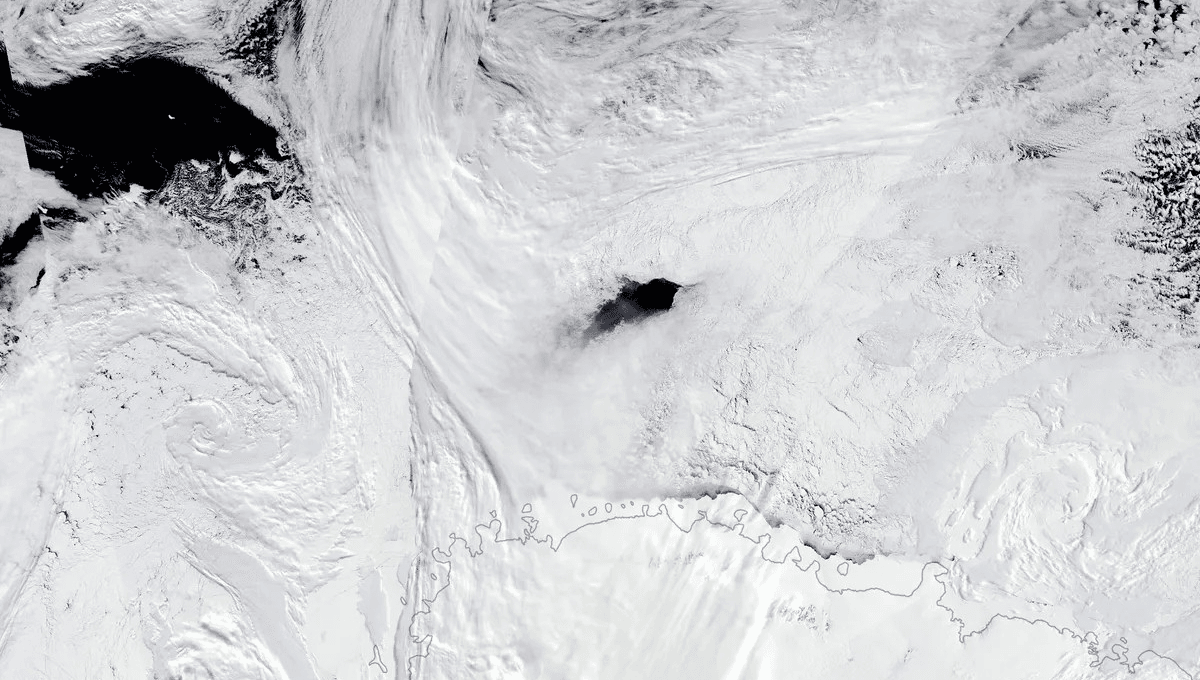
In 2016, the sea ice in Antarctica’s Weddell Sea developed an enormous hole twice the size of Wales – the country, not a pod of giant mammals. The following year it returned, but the reasons remained unknown. Now they have been explained as a result of previously understood factors and a rare form of salt transportation.
It’s common for areas of open water to appear within sea ice, to the extent that the phenomenon has a name: a polynya. However, the 2016 Maud Rise Polynya was the largest for 40 years. Global heating was thought to have stopped such events, might it now be bringing them back?
In an effort to explain the mystery, scientists recruited elephant seals as research assistants, strapping scientific equipment to their heads. The initial interpretation of that data led meteorologists to attribute the polynya to a mix of unusual ocean conditions and an epic storm.
Years later, another team has added some new elements to the explanation.
One important question to explain is why such a large polynya has now been seen five times in the same place – three times in the 1970s before these two events – but nothing so big has turned up elsewhere. The more recent polynyas occurred near the peak of the sea ice extent in late winter or early spring, so this was not a case of thaw coming a little earlier there.
Part of the answer lies in a large circular current known as the Weddell Gyre, which was unusually strong from 2015-2018. This brought a deep layer of warm salty water to the surface.
“This upwelling helps to explain how the sea ice might melt. But as sea ice melts this leads to a freshening of the surface water, which should in turn put a stop to the mixing. So, another process must be happening for the polynya to persist. There must be an additional input of salt from somewhere,” said Professor Fabien Roquet of the University of Gothenburg in a statement.
The evidence from the trusty seals, in collaboration with autonomous floats, is that salt rose in turbulent eddies as the current flowed over the Maud Rise, the undersea ridge from which the polynya gets its name.
The polynya did not form directly over the peak of the rise; instead, it was centered on its northern flank. Roquet and co-authors attribute this to Ekman transport, where water moves at right angles to the direction of the wind, rather than running before it.
“Ekman transport was the essential missing ingredient that was necessary to increase the balance of salt and sustain the mixing of salt and heat towards the surface water,” said co-author Professor Alberto Naveira Garabato of the University of Southampton. It’s not something that has been considered in previous efforts to explain polynya formation.
Climate change may not have been the cause of the Maud Rise Polynya, but that doesn’t mean they are unrelated. Ice is an insulator, blocking the transfer of energy between ocean and the atmosphere. Its absence increases that exchange, and the same goes for carbon dioxide. Deep in the Antarctic winter there is little sunlight for the open sea to absorb, but that changes come spring, when the polynya can lead to additional warming. In this way the polynya can be a microcosm of the decline of southern sea ice that began in 2016 and accelerated drastically last year.
“The imprint of polynyas can remain in the water for multiple years after they’ve formed. They can change how water moves around and how currents carry heat towards the continent. The dense waters that form here can spread across the global ocean,” said Professor Sarah Gille of the University of California San Diego. In 2018 some, but not all, of the conditions necessary to form polynyas were still present, and no large opening appeared.
The study was published open access in Science Advances.
An earlier version of this story was published in 2024.
Source Link: Nine Years Ago A Huge Opening Appeared In Antarctic Sea Ice – Now We Know Why